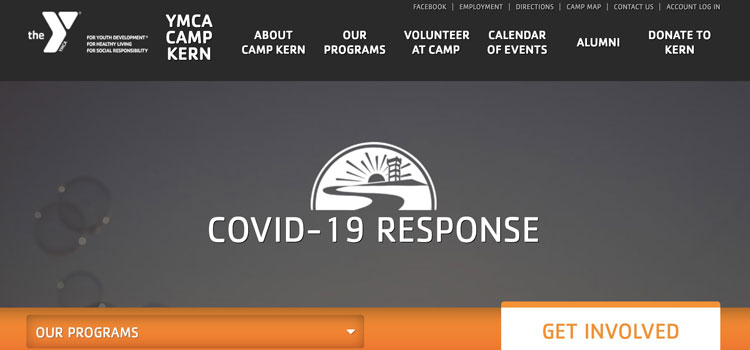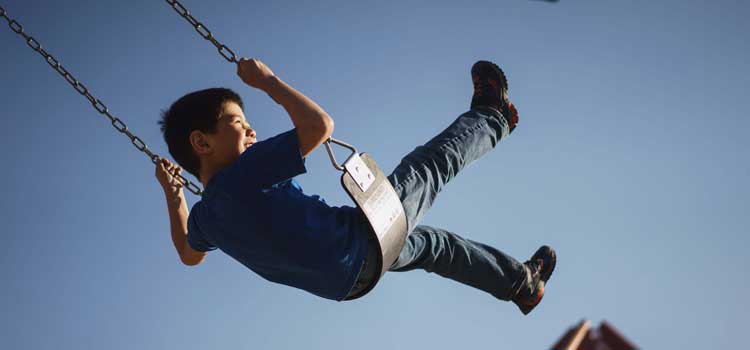As a camp director during this crisis, you need to implement best practices for communicating with summer camp families so they understand the logistics of getting their kids and themselves ready for camp this summer while also providing emotional support to staff, families, and campers. You’re also adjusting your plans to get ready for camp in a window that continues to get smaller.
As we detailed in the “How Camps are Responding to COVID-19 So Far” post, we’ve been calling all of our client camps and asking them what resources they need from us. One specific request that has emerged frequently in these calls is guidance on how to communicate with camp families and staff during the COVID-19 crisis.
Your Communication with Parents Matters More than Ever
Camp directors understand that they need to be in contact with their camp communities right now and want to know what messages to send, when to say what, and whom to target with each. To help you keep the channels open and connect in new and meaningful ways, we’ve outlined some best practices that can help you create tailored marketing and communications during the pandemic.
Our hope is that these strategies will help you build trust with your audiences and get across the necessary details – all while maintaining your brand identity and showing the kind of empathy your community has come to expect.
Tip #1: Make Information Easy to Find
 Acknowledging the challenges of our current situation is an important first step. Your camp community needs to know this is top of mind for you, as it is for them. A few simple steps you can take to get this across are:
Acknowledging the challenges of our current situation is an important first step. Your camp community needs to know this is top of mind for you, as it is for them. A few simple steps you can take to get this across are:
- Put a COVID-19 message on your website like the example above from Camp Kern.
- Add a promo bar or pop-up window that leads people to this information immediately. It should be the first thing viewers see when they look on your site for details, because it’s most likely the reason they’re visiting your site right now.
- Make sure the most recent posts on all your social media accounts are also related to your COVID-19 response.
- Send an email to your list with as much information as you have right now, along with your plan for delivering updates.
- Build an FAQ page of your website (similar to this one on Eden Village Camp’s website), or a document you can email and post on social media. As questions emerge, add to this resource and keep promoting it regularly.
- Be as specific as possible with details about scheduling, financial adjustments, and the steps you are taking to create both physical and emotional safety.
Don’t over-promise, but make sure you do what you say you’re going to do. One way to more deeply connect with your campers and their families is to record video messages like this one from Skyline Camp and Retreat Center. These provide a personal touch that humanizes the decision-making process – and video is often an easier and faster format for people to digest. The connections you maintain with camp families and staff during this time can help promote confidence and strengthen relationships, thereby boosting retention in years to come.
Tip #2: Balance Emotional Support and Logistical Needs
Camp matters to you, and it matters to every person who is planning to attend, work, or send their kids. Whether your camp happens on time or with a shortened season, regular pre-camp needs remain the same. Kids need lists for what to pack or bring each day, counselors need training and introductions, and everyone needs to get physicals completed and to send in their medical forms. This inability to ignore basic logistical needs is difficult because families are dealing with new challenges brought on by the COVID-19 pandemic. How do you balance providing support your camp families emotionally, while still reinforcing the tactical actions they need to take?
We think that starting with emotional connection, and then leading into the more basic needs is the right approach. To create community and give families activities to break up the monotony of sheltering in place, plan and host virtual events such as talent shows, sing-alongs, or counselor introductions. This way, when you do need to ask for forms or other basic information, parents and caregivers know you recognize that these times are different than just business as usual. And whenever you have to make a logistical ask, remind them that your goal of having camp is to provide a place to heal, connect, and return to normal life as much as possible. People likely haven’t forgotten why camp matters, but it’s ok to remind them anyway.
Tip #3: Be Timely, Relevant, and Conscious of Words and Pictures

Telling the story of your camp during a pandemic is no easy task because you have to think about every word, phrase, and photo that you use. Before you start putting together new emails, webpages, or social media posts, make sure to turn off ads and cancel any pre-scheduled content and communications. You have too many new important messages to send, and you don’t want to be accidentally putting out content that could come off as tone-deaf or dismissive of the current climate. Even if you have a blog post or campaign you’ve been planning for months, put it on the back burner.
When it comes to the new messages you’re sending specific to the pandemic, be mindful of the words and pictures you’re using. The reality is that when camps open, we’re still going to be dealing with some level of social distancing. (As we note in our blog post, “How Camps Are Responding to COVID-19 So Far,” there are forthcoming best practices from the ACA and CDC that will specifically guide the right approach to physical distance and sanitation.) While you may not know yet what social distancing will look like at camp, you want to balance words and images that evoke a sense of community and togetherness, while also making it clear that you’re going to take regulations seriously.
When you’re sending emails or posting updates on social media, balance photos of campers sitting near each other with some that show campers in large open areas and photos of your camp space and landscape. Also be sensitive to language that might trigger certain anxieties right now, such as “hand-in-hand,” “close quarters,” and “tight-knit.” Again, you don’t have to have all the details ironed out yet, but make sure your marketing portrays a balance and that you’re taking peoples’ potential anxieties about physical closeness into account.
The connections you maintain with camp families and staff during this time can help promote confidence and strengthen relationships, thereby boosting retention in years to come.
Tip #4: Be Realistic and Transparent
There’s nothing wrong with being optimistic in your communications and marketing. Everyone has the same goal in mind, which is for camp to happen safely this summer. Just don’t let your optimism swing so far in one direction that you come off sounding oblivious to the challenges ahead. Most importantly, don’t make promises you can’t keep. At this point you’re probably not sure how the summer is going to unfold, and the best approach is to say exactly that to parents and potential staff. No one expects any kind of guarantee in the midst of so much uncertainty. All they expect is to be informed of the latest updates when you have them. Set expectations with a predictable cadence of communications and stick to it – even if all you’re saying is that you still don’t know.
Think about the values of your camp, and the lessons you pass on to every camper, and use those to guide your communications. How are your camp’s values informing your decision-making process and approach to the summer? Make sure to share that with your camp families.
Additionally, put yourself in your families’ shoes to make sure you’re addressing the financial and logistical questions that are probably on their minds. If you’re not sure what information people are seeking, just ask – this is a great time to lean on the closeness of your camp community. Getting direct feedback is the best way to make sure you’re giving people what they want and need.
Tip #5: Plan Wisely for Increased Availability

There’s no doubt that you’re doing everything you can to provide answers to every question and alleviate every worry. But, realistically, that’s not going to happen one hundred percent of the time. People are wondering if summer jobs they were counting on will exist. Parents are wondering if they will have to adjust childcare plans and if or how financials will be handled. And kids are wondering if there will be camp for them to go to. Because of this, people are going to need (or even expect) that you will take each and every one-on-one call that comes your way. While you want to be available and accessible to your community, you’ll need to think about implementing scalable communication strategies to avoid working 24/7.
One strategy is to hold “office hours” via video, conference calls, or social media. These are times when you make yourself available for questions in a group setting. If it seems like people need even more personal attention, try using a calendar meeting app like Calendly. You can pre-select times in which you’re available, and block off others when you’re not. This way, parents or other interested parties can schedule short calls with you that fit with your schedule, and you can set more time aside to work on logistics or for self-care.
Learning As We Go
These suggestions can help guide you, but leaning on other camp professionals is key. We’ve been so inspired and impressed by the information and support on both the Summer Camp Professionals Facebook group and the COVID-19+Camp Slack workspace, and we highly recommend that you use both resources. People are asking questions, sharing resources, and providing opportunities for emotional support.
The honest answer to the question of how to market your camp and communicate to your community during a crisis this far-reaching is that we’re all still figuring it out as we go. Camp people are creative, nimble, and caring, and that combination of attributes will ultimately guide us as we all wade through these unfamiliar waters together.
